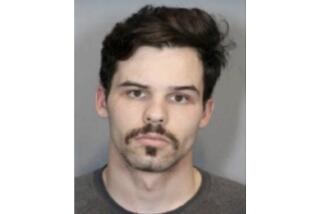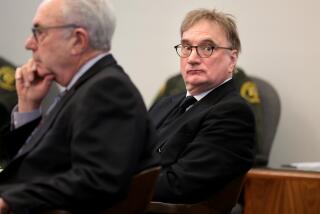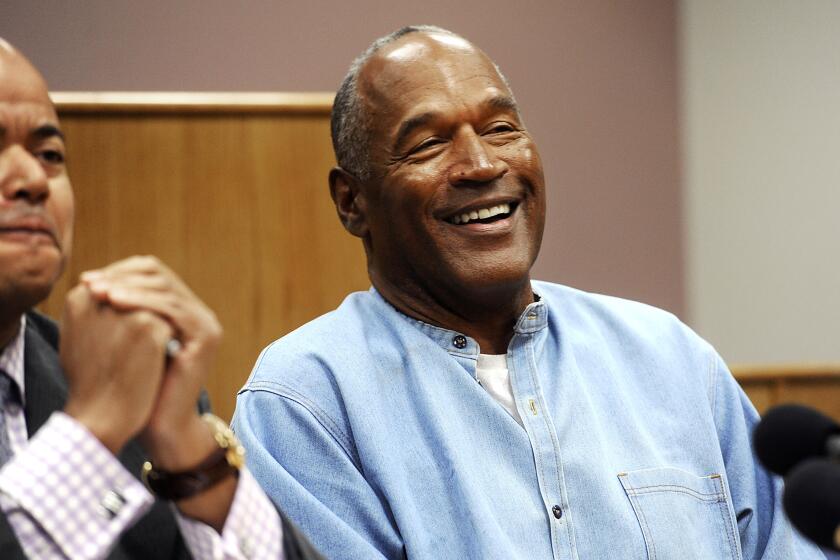San Diego killer Betty Broderick denied parole for second time
San Diego killer Elisabeth “Betty” Broderick will remain in state prison where she is serving time for the 1989 murders of her ex-husband and his new wife at their Hillcrest home.
At the end of a daylong hearing, a two-member panel of California’s parole board voted unanimously on Wednesday that Broderick is not suitable for release from prison.
They denied parole for the longest term possible: 15 years. She could request another hearing sooner than that if she meets certain criteria.
Broderick, 69, is being held at the California Institution for Women in Corona where she is serving out a sentence of 32 years to life.
This was the second time the former socialite had been granted a parole hearing since she was convicted in 1991 for the murders of her ex-husband Daniel Thomas Broderick III, 44, and his wife, Linda Kolkena Broderick, 28.
Daniel Broderick was a well-known medical malpractice lawyer. His wife, Linda, had been his office assistant before they married.
Both were fatally shot the morning of Nov. 5, 1989, as they lay in bed at home.
“Betty Broderick is an unrepentant woman,” said Deputy District Attorney Richard Sachs, who argued against a grant of parole at the hearing, which he said ran nearly 11 hours.
“She has no remorse and zero insight into the killings… ,” Sachs said in a phone interview. “She just basically said they drove me to do this.”
Sachs said several of the victims’ family members attended the hearing, as well as some of Daniel Broderick’s former colleagues who were there to represent family who could not attend. Roughly 18 people made statements to the panel, which took about two hours.
Betty Broderick was represented by an appointed attorney, who declined to comment after the hearing.
Broderick was tried twice for the slayings. The first time ended in a mistrial in 1990, when 10 jurors voted to convict her of murder and two voted to convict her of the lesser charge of manslaughter.
In December 1991, a different jury found Broderick guilty of two counts of second-degree murder.
Broderick was first denied parole in 2010, after being incarcerated for more than two decades.
During the trials, she never denied firing the fatal shots, but she contended that she had been pushed to do so because she had long been a victim of her husband’s abuse during their contentious divorce and the custody battle over their children.
The prosecution maintained that Broderick was a cold and deliberate killer who felt she had the right — no matter the cost to others — “to act out in vicious and extreme ways just because she was angry.”
Deputy District Attorney Kerry Wells, now a Superior Court judge, presented evidence in trial that Broderick had left several angry — and some profane — messages on her ex-husband’s answering machine before the murders and even drove her Chevrolet Suburban through the front door of his home.
Many people reported they had heard Broderick say she wanted to kill her ex-husband and his new wife.
The killings occurred on a Sunday morning. Broderick was unable to sleep and picked up a letter she had received a couple days earlier from Daniel Broderick’s lawyer. She testified at the first trial that she read the letter, which warned her that she would be subjected to contempt of court proceedings if she continued to leave obscene messages on her ex-husband’s answering machine.
She said the letter set her off like a fuse, according to a November 1990 article published in the San Diego Union.
To get into the house where the couple was sleeping, Betty Broderick used a key she had taken from her daughter weeks earlier. She sneaked up the stairs as Daniel and Linda Broderick slept, and fired a .38-caliber revolver into their bedroom.
Three bullets struck the victims.
Broderick left the home and turned herself in to police later that day.
She has said she did not intend to kill the couple, only to confront her ex-husband. The gun, she said, was to help get his attention.
The high-profile case divided San Diego County residents and drew attention both nationally and internationally. It was the first San Diego court case to be broadcast on the Court TV cable network.
The events were turned into two made-for-TV movies, as well as a cable television documentary and several books.
dana.littlefield@sduniontribune.com
Twitter: @danalittlefield
More to Read
Start your day right
Sign up for Essential California for news, features and recommendations from the L.A. Times and beyond in your inbox six days a week.
You may occasionally receive promotional content from the Los Angeles Times.







